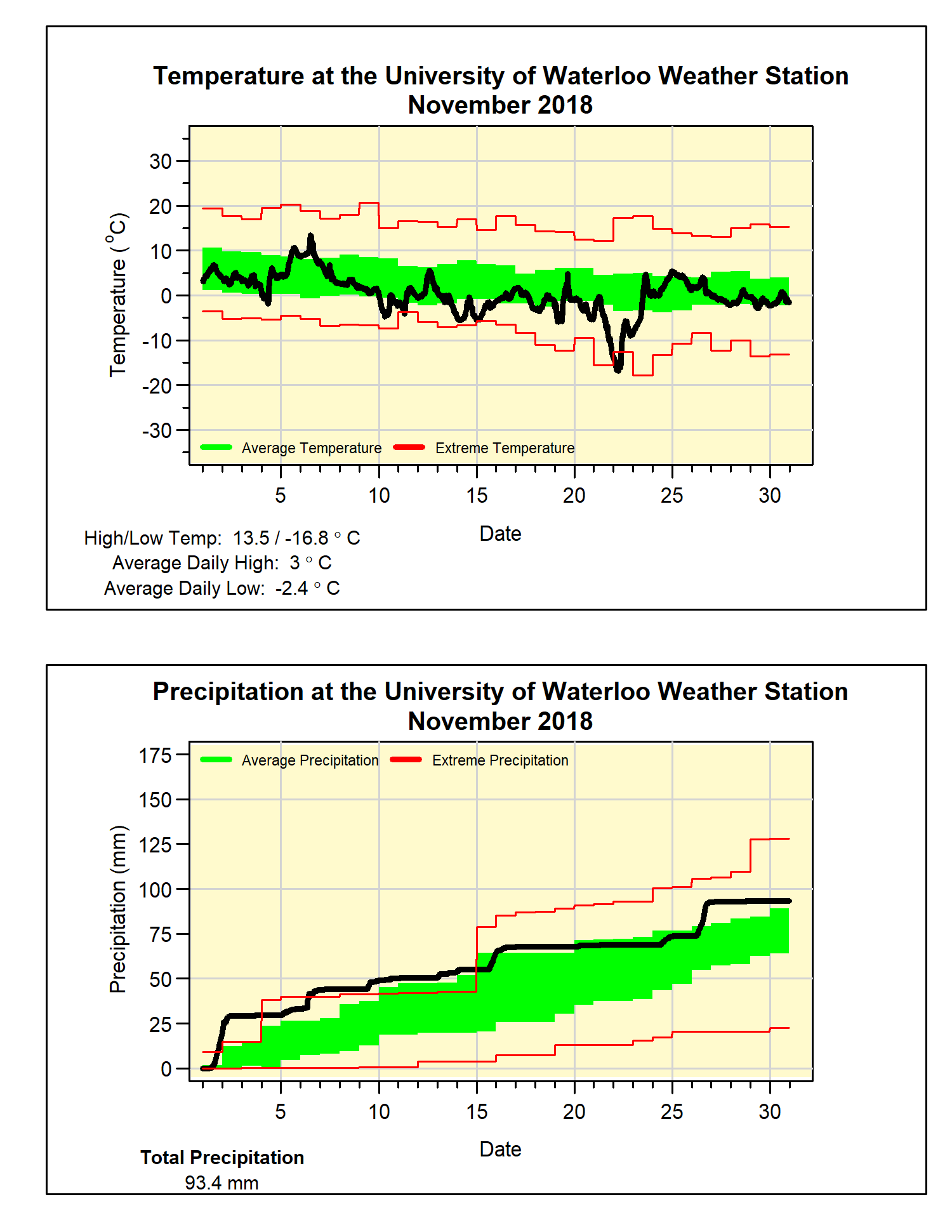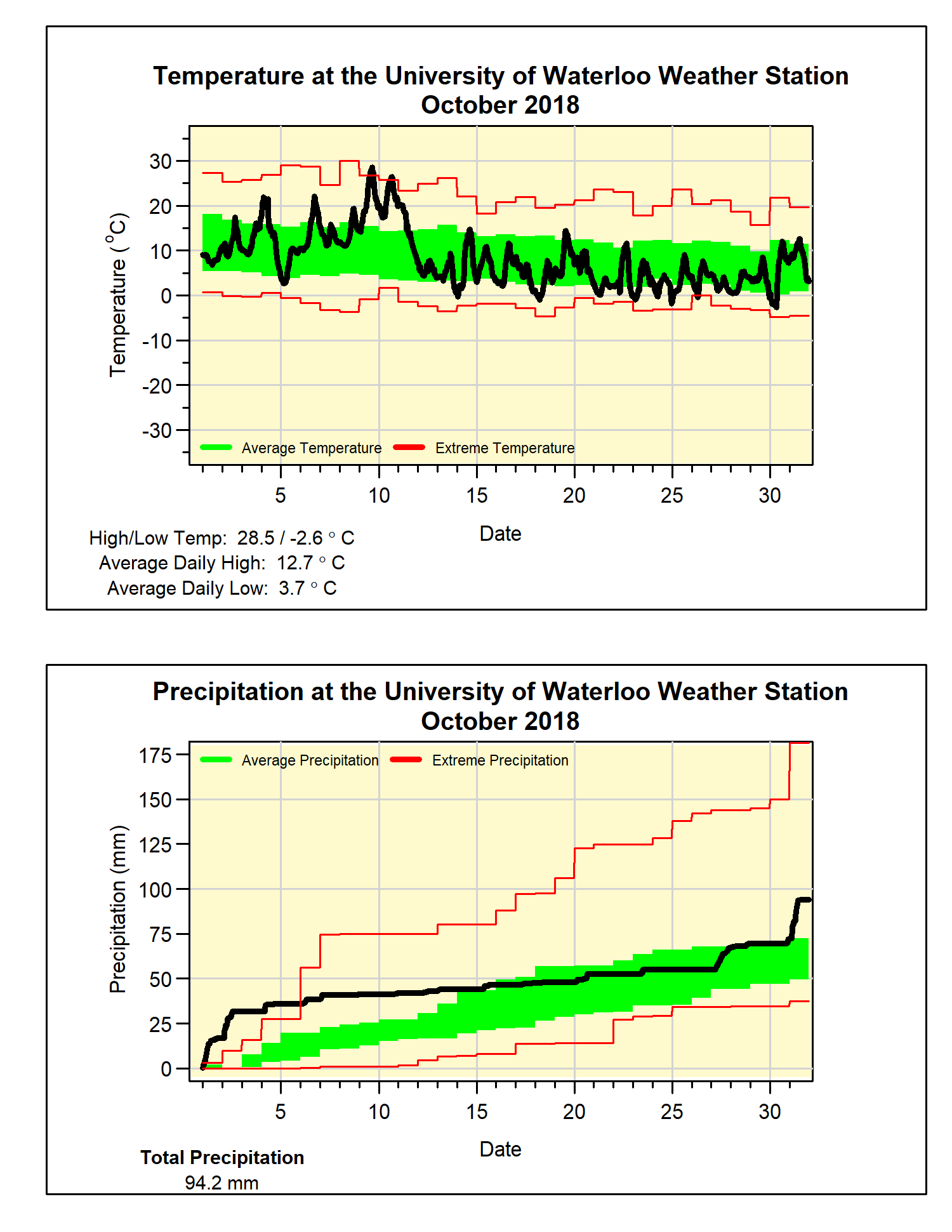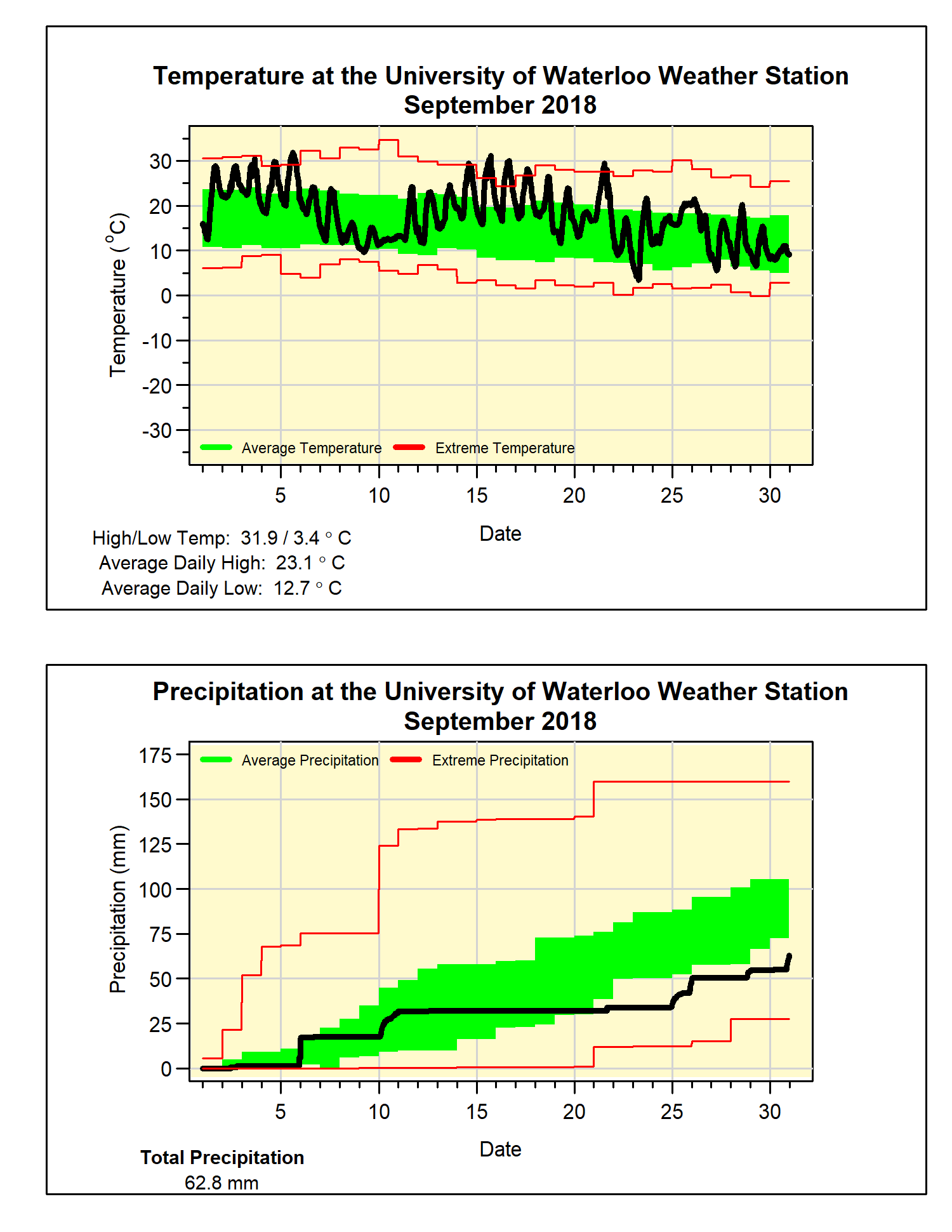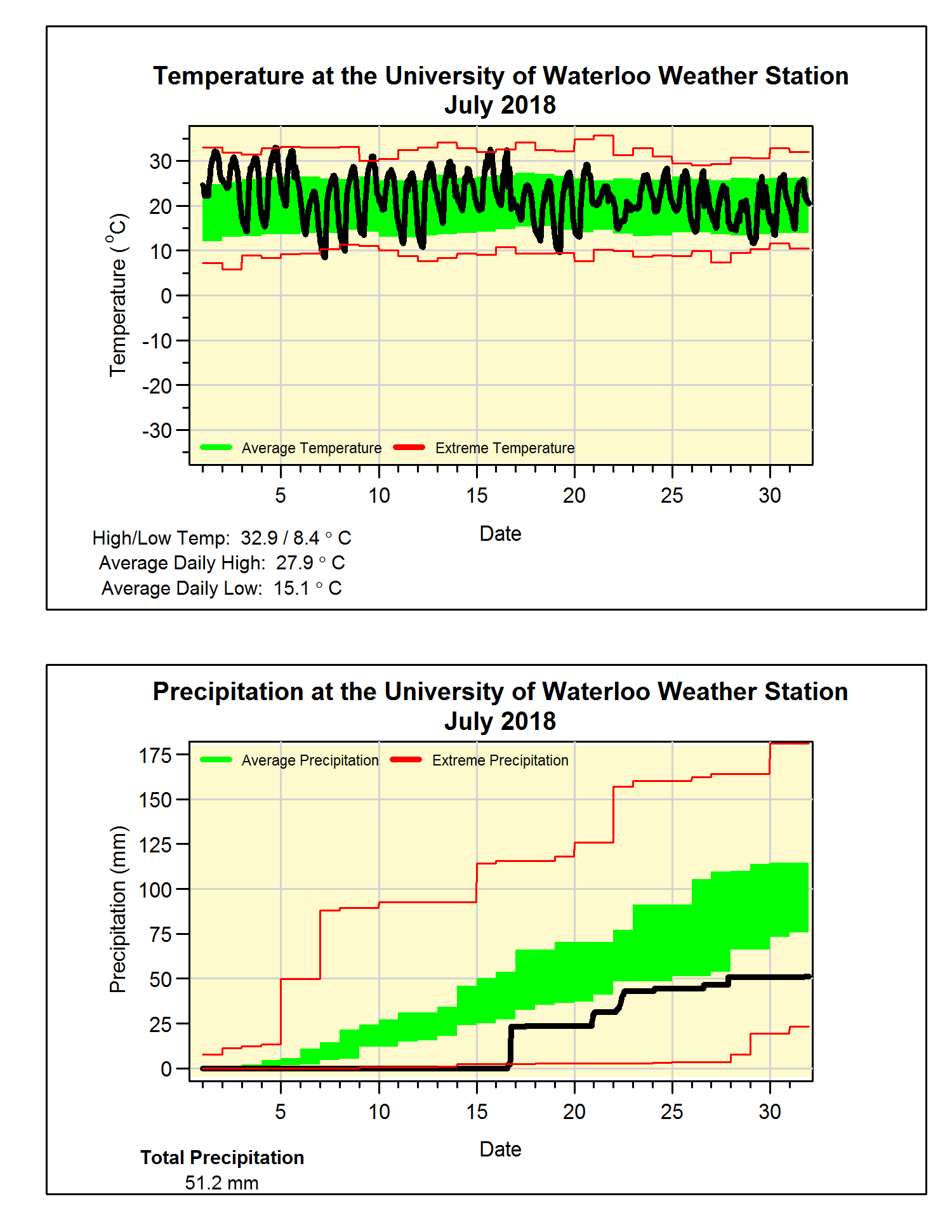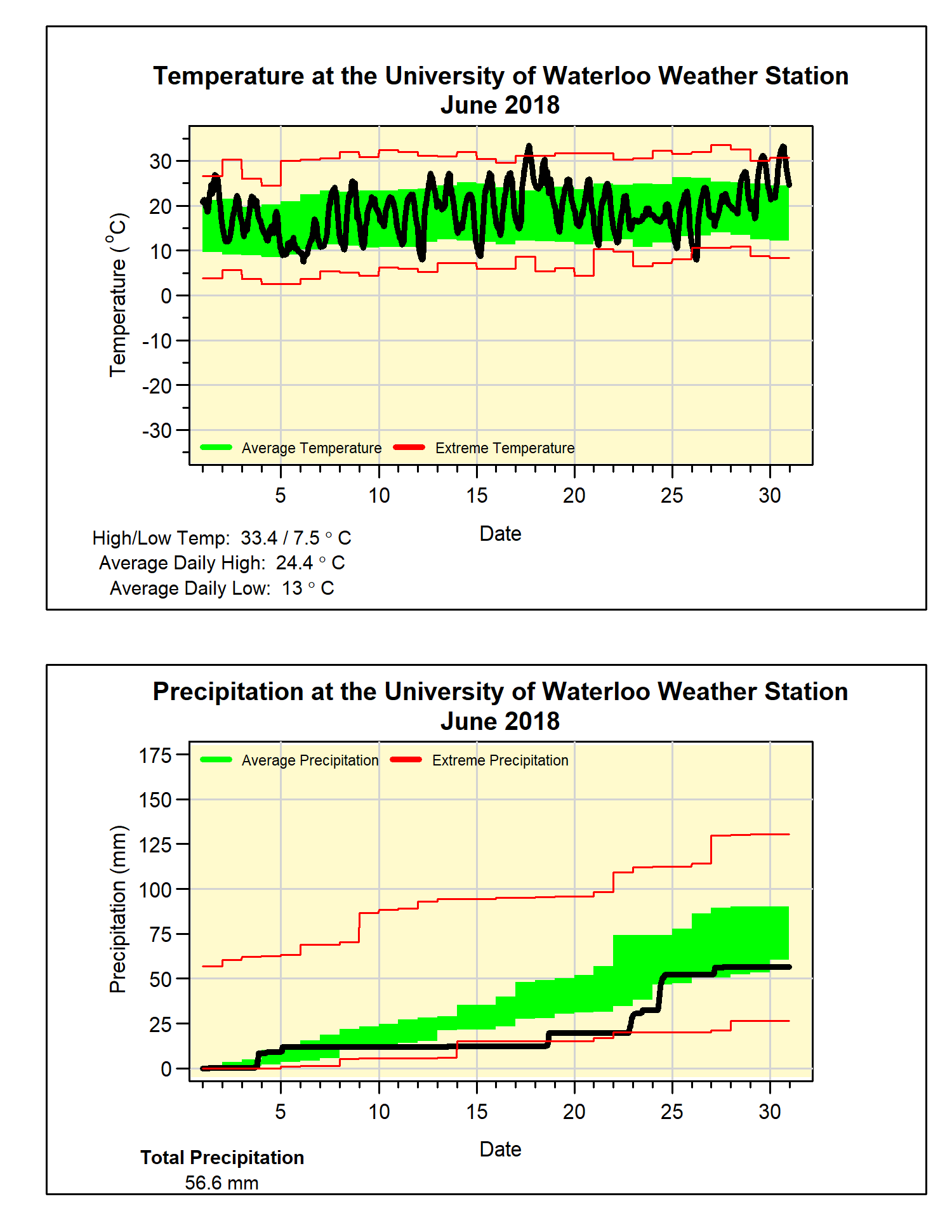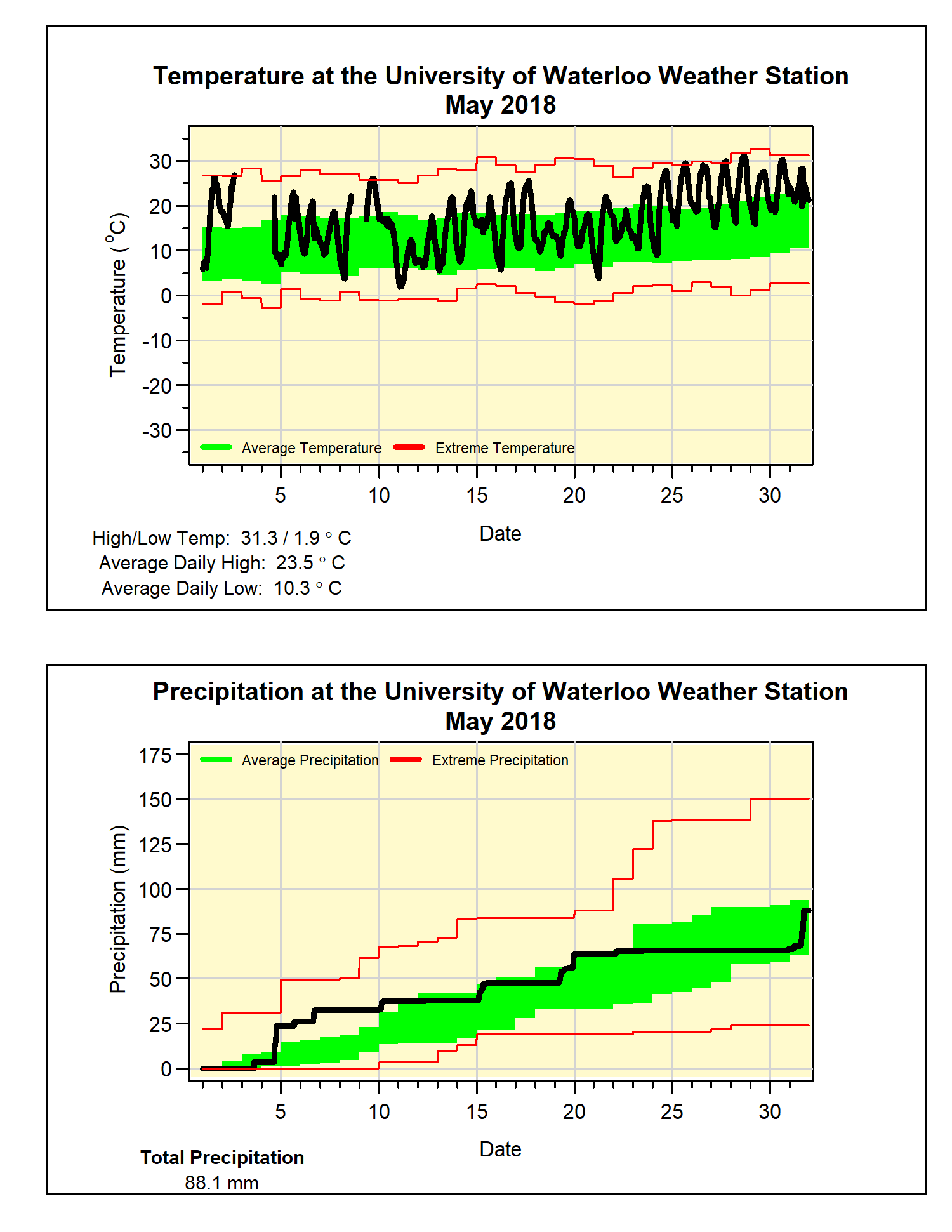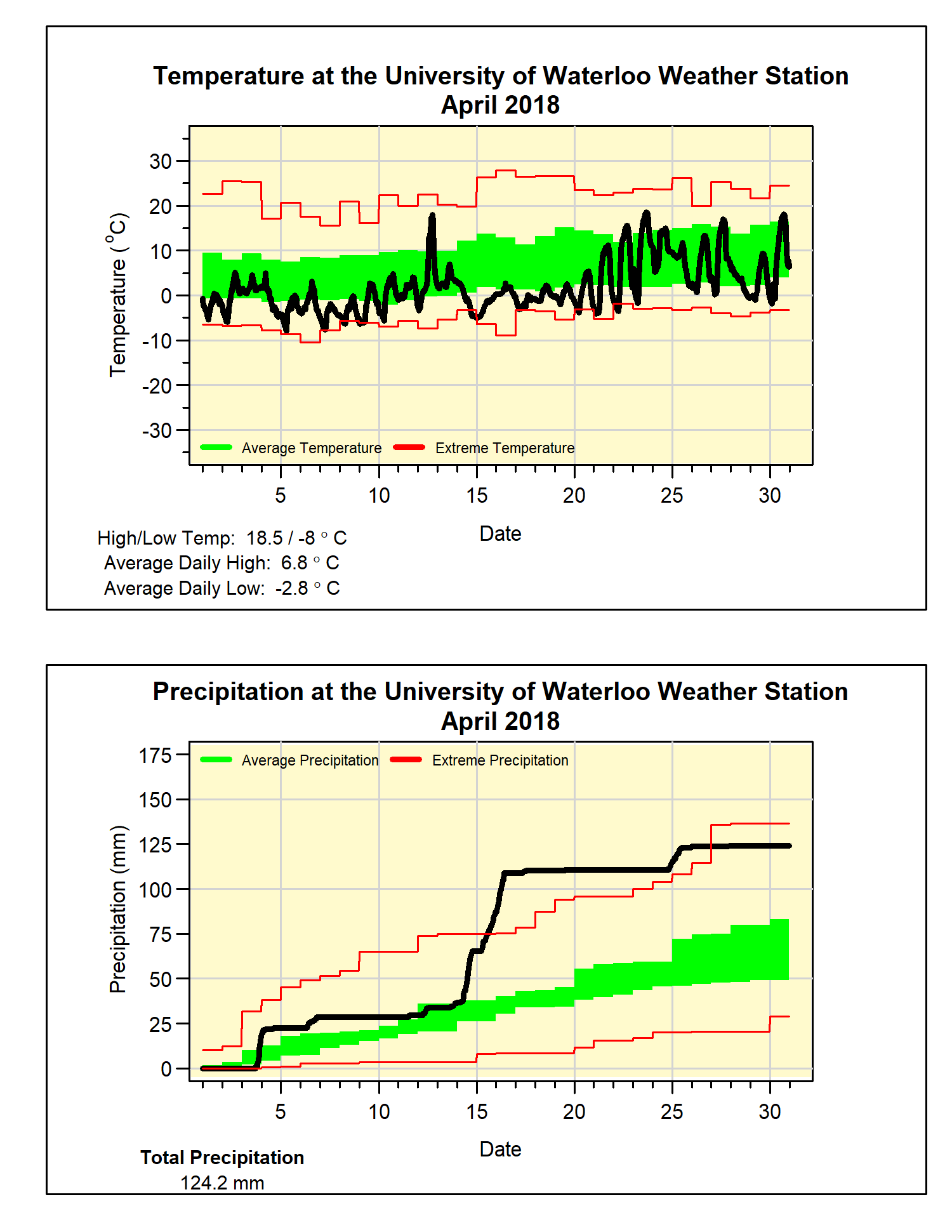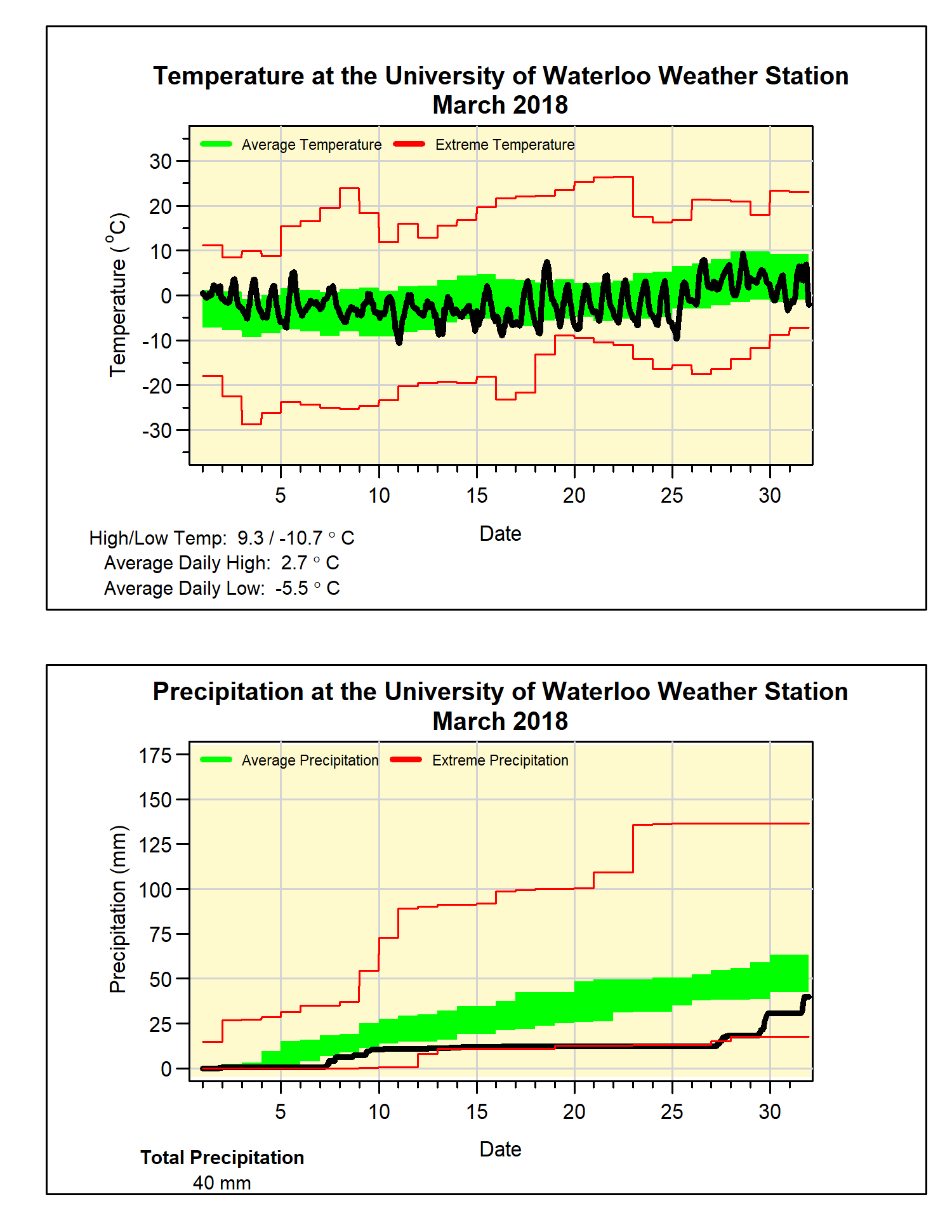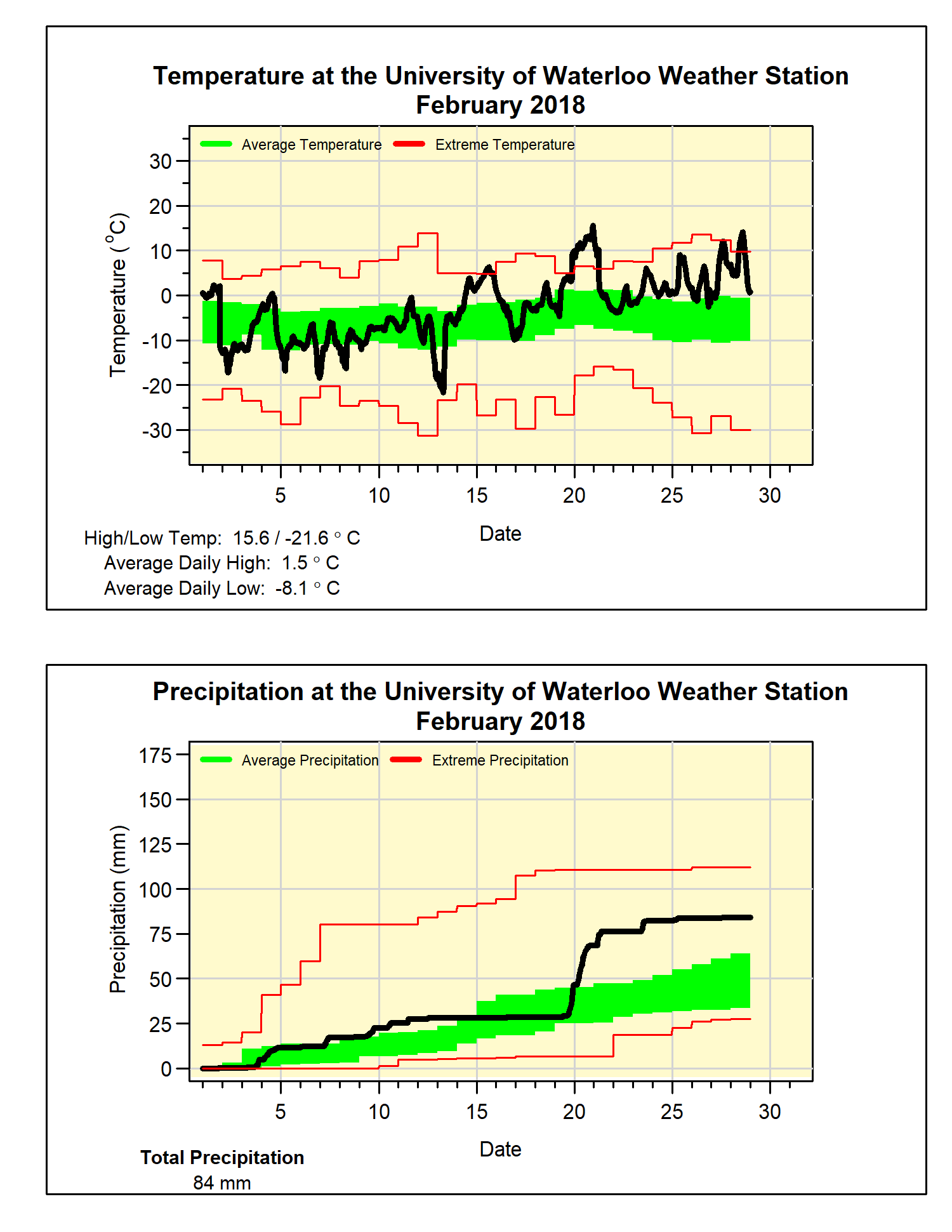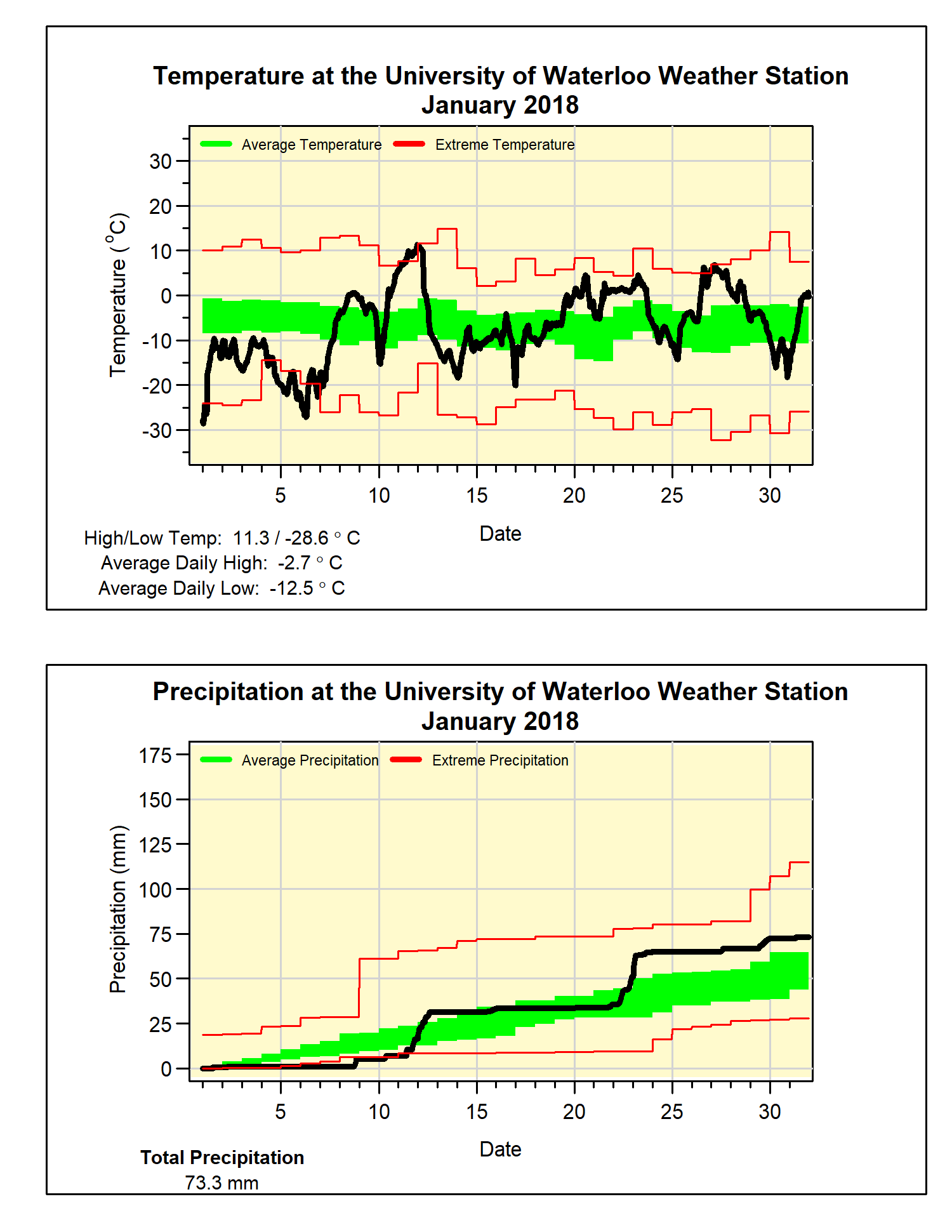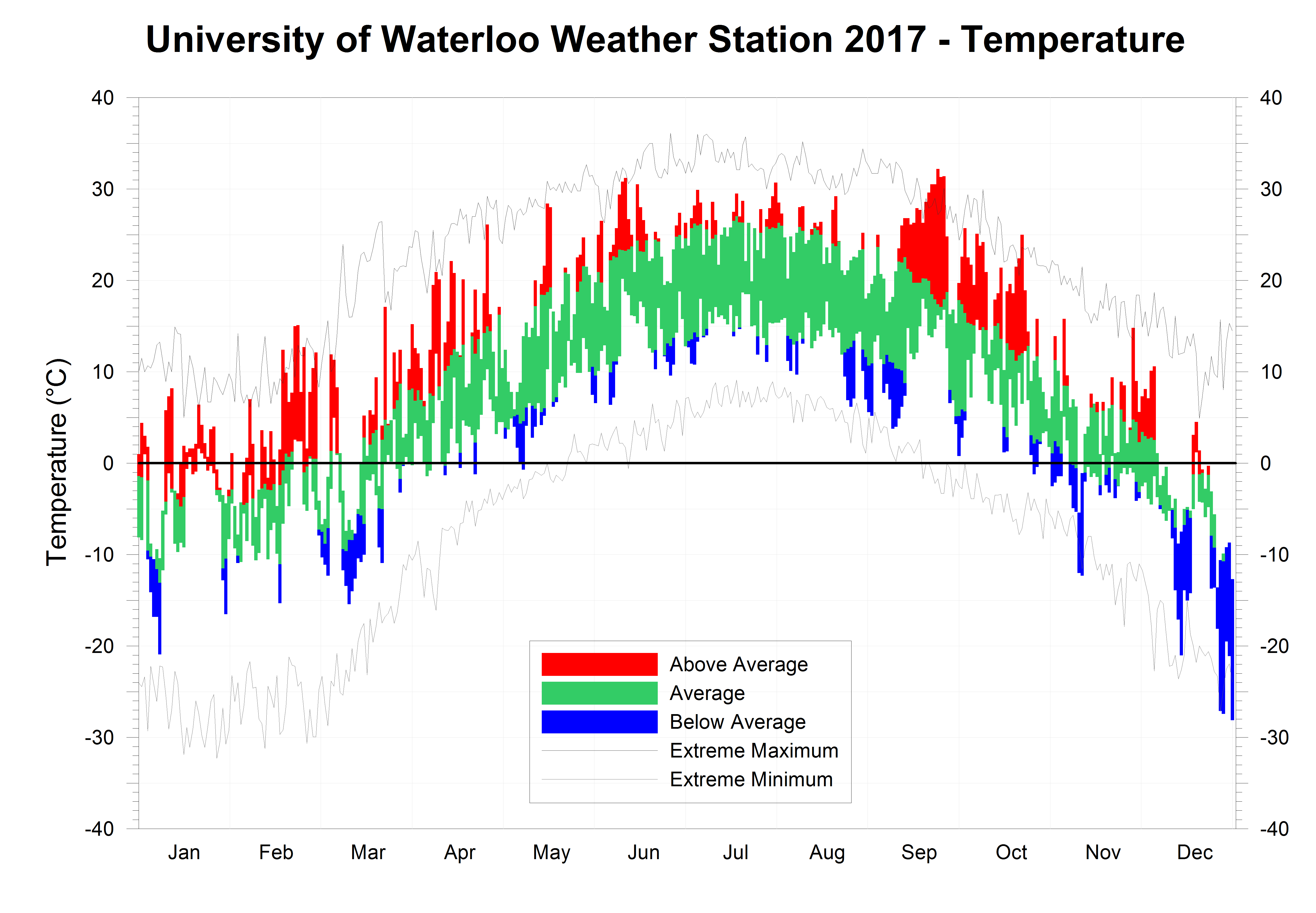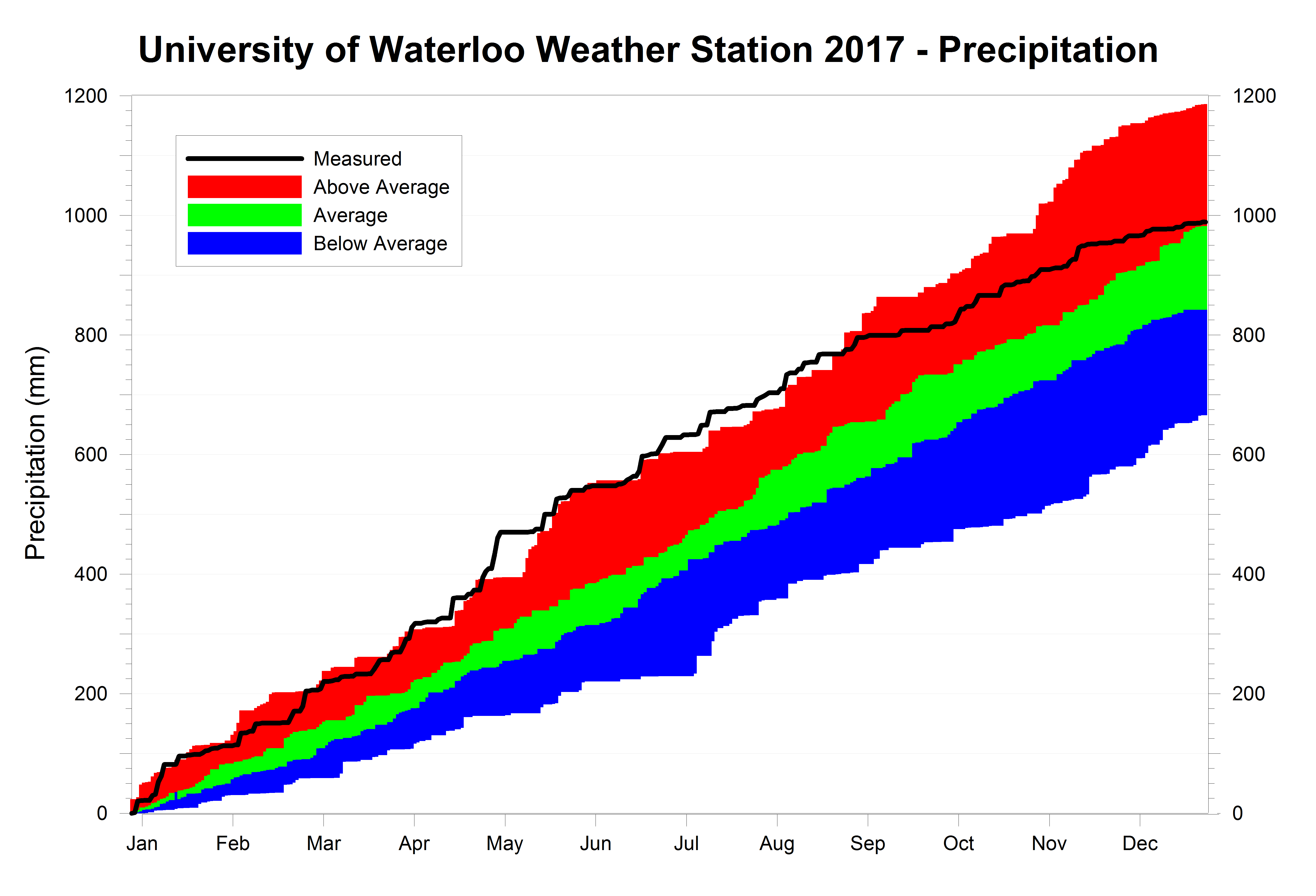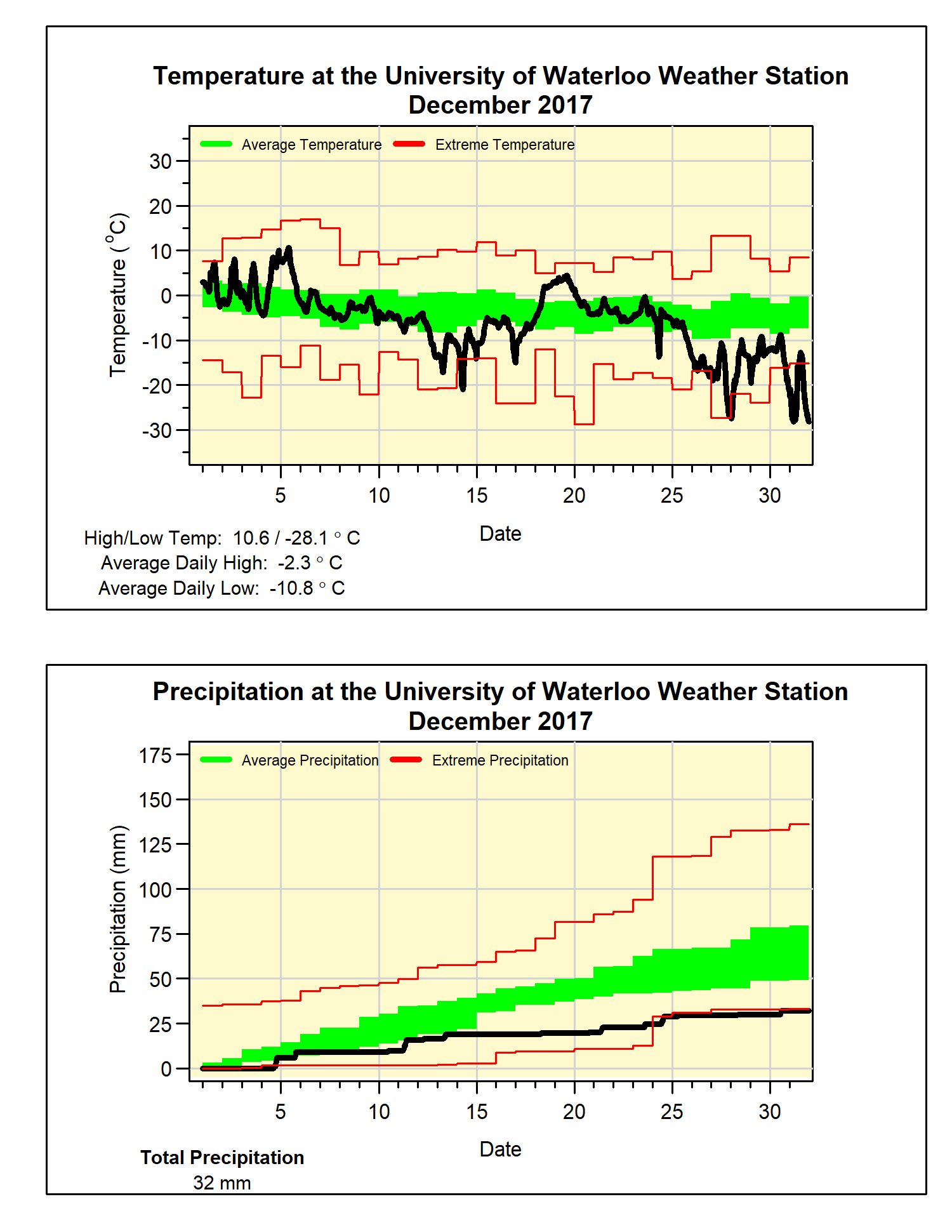A wet November that was the coldest in over 20 years
The colder temperatures that started in mid-October continued throughout November, with an overall temperature over 2 degrees below average it was the coldest November since 1996. This put it at the 5th coldest in the over 100 year history of weather records in the region. As well, the low temperature on the 22nd of -16.8°C was the coldest November temperature since November 23rd, 2000 when it was -17.9°C.
The total precipitation for the month of 93.4 mm was only a bit above the average of 87.1 mm, but enough to put into the above average range. This puts the total for the year at 878.5 mm compared to the average of 832.9 mm.
The real story of the precipitation was the 21.5 cm of snow we received in the first half of the month, this is the most for the first half of the month since 1995 when we had 25 cm. The rest of November only saw a little more resulting in a total of 23.5 cm, which is still a lot more than the average of 13 cm for the month.
Summary for November 2018:
Maximum Temperature 13.5°C
Minimum Temperature -16.8°C
Average Daily High Temperature 3.0°C (Long term average 6.3°C)
Average Daily Low Temperature -2.4°C (Long term average -1.4°C)
Total Precipitation 93.4 mm (Long term average 87.1 mm)
